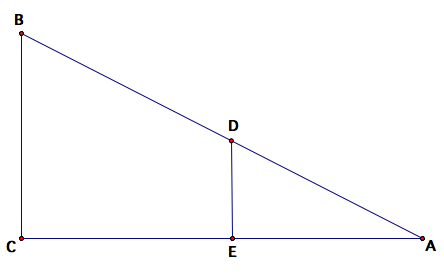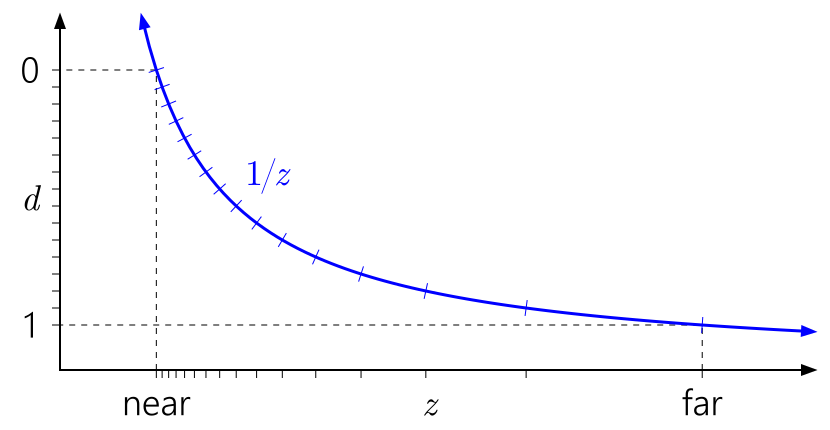I'm learning about 3D computer graphics, but I'm having a hard time understanding why the near plane of a viewing frustum can not be placed at z position $0$ (right at the camera).
I can understand conceptually that the near plane is essentially the retinal canvas -- so by definition it must exist to some extent -- but I have trouble understanding why the near plane isn't simply an abstract concept where it's actual position is infinitesimally close to the camera position, as opposed to a definite z position away.
In several explanations, the following formula is given to explain why $0$ cannot be used as the near plan position (where $A$ is the camera position, $B$ is an object vertex, and $D$ is the perspective projection of point $B$ onto the near plane):
$${ BC \over AC } = { DE \over AE }$$
In this case, the geometry of similar triangles $ABC$ and $ADE$ is used to determine the height of $D$ via the solution of $DE$. It is obvious that if the near plane is at $0$ ($AE = 0$), then a division by $0$ occurs -- hence, why the near plane cannot be located at position $0$.
However, why is this method used to determine the position of $D$ on the canvas?
I've written a simple raycasting visualizer before and didn't have an explicitly defined near plane. In my engine, I simply defined a $60^\circ$ field of view and divided the number pixels on my screen among that field of view. For example, for a $300$x$300$ screen:
$$1\text{ pixel} = 300/60^\circ = 5^\circ$$
Next, I found the angle between my camera and the object vertex ($\angle BAC$) and divided it by $5^\circ$ to acquire the pixel coordinate on my screen. In this method, no explicit near plane was necessary and I used my actual camera position to determine the angle.
So how was I able to perform a perspective projection without a near plane in my raycasting method?

